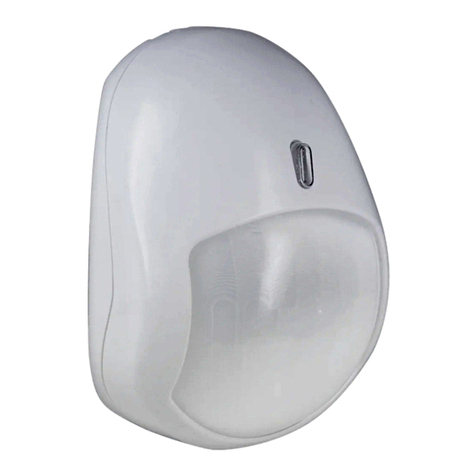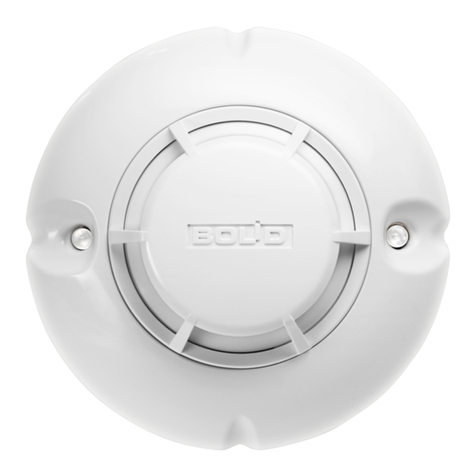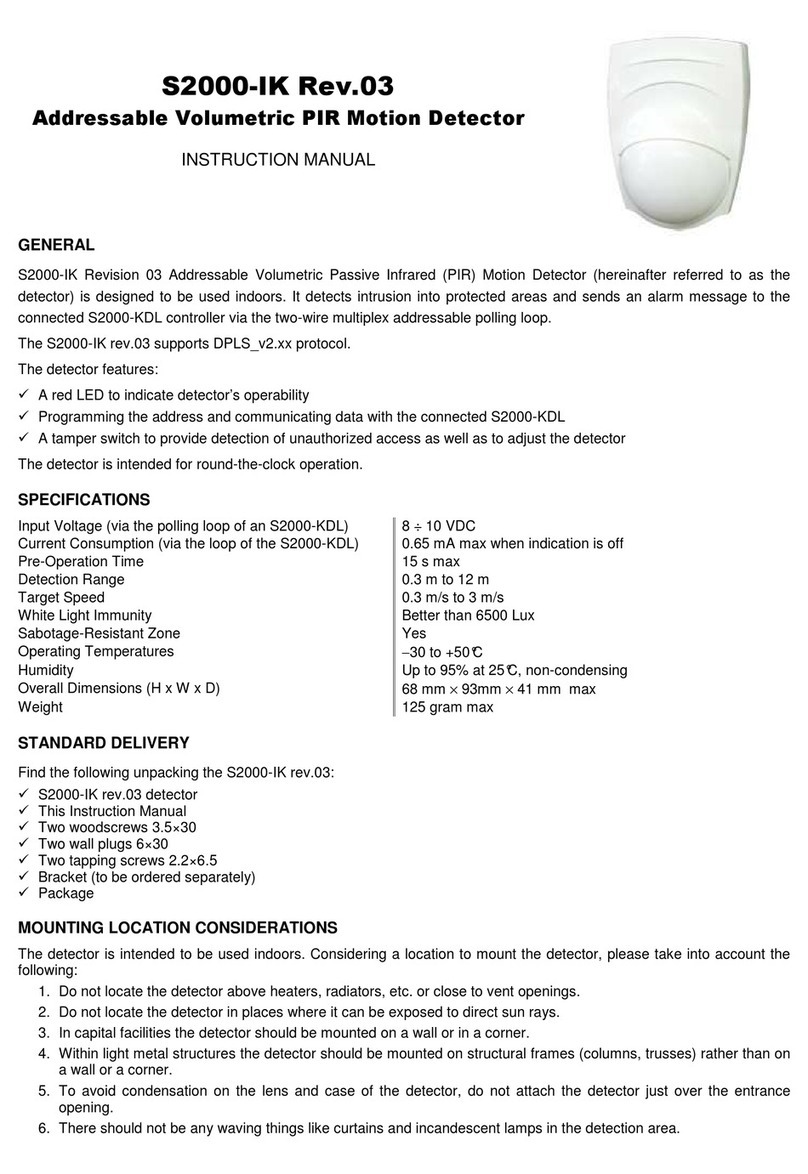
5
2
5
2
IPG
S2000-KDL
device
device
IPG
Figure 1. Connection Diagram
ANALOG ADDRESSABLE COMBINED GAS
AND RATE-OF-RISE AND FIXED TEMPERATURE DETECTOR
S2000-IPG
INSTRUCTION MANUAL
1TECHNICAL DATA
1.1 General
S2000-IPG Analog Addressable Combined Gas and Rate-of-Rise and Fixed Temperature Detector (hereinafter referred to as the detector) is designed to detect
fires accompanied by appearance of carbon monoxide and by generating heat in enclosed premises. The gas detection part of the detector is sensitive to the chemical
composition of air and issues a Fire Alarm when the change has exceeded a threshold level. The rate-of-rise and fixed temperature part of the detector met the
requirements of Class A1R issues a Fire Alarm if the temperature is rising slowly up to threshold value or if the rate of rising of the temperature in the premises has
exceeded a relevant level. The detector provides generating the following messages: Norm, Fire Alarm, Fire Prealarm, Trouble. The detector operates within the two-
wire multiplex addressable polling loop of a polling loop controller such as S2000-KDL or S2000-KDL-2I (hereinafter referred to as PLC) in an Orion system. Each
functional part of the detector is to be assigned to its own address in the polling loop of a PLC. Upon the request of the PLC the detector returns the value of the current
CO concentration (ppm) or the surrounding air temperature.
The detector supports DPLS_v2.xx Multiplex Addressable Polling Loop Protocol providing monitoring PL voltage at the point where the detector is connected.
Electromagnetic compatibility of the detector meets the requirements of Russian Standard ГОСТ Р53325-2012 for the third severity level. The firmware version of the
S2000-IPG is 1.01. The detector can be tested by means of a laser-based tester (for example, manufactured bySystem Sensor). The detector is intended for round-the-clock
operation. The content of precious materials: no need to account for the storage, disposal and recycling (see Clause 1.2 of Russian Standard ГОСТ 2.608-78).
1.2
Specifications 1.3
Standard Delivery
1) CO Sensitivity, ppm - 20 to 80 Single-piece delivery:
2) Alarm Temperature, °С- +54 - S2000-IPG Detector - 1 pc.;
3) Power Voltage, V - 8 ... 11 - Instruction Manual - 1 pc.;
4) Consumed Current, mA - 0.6 - Protective Cover - 1 pc.;
5) Operation Temperature, °С- minus 30 to +55 - Address Label - 1 pc.;
6) Pre-operation Time, s - 60 max - Individual Packing - 1 pc.;
7) Relative Humidity, % - Up to 93 at +40°С- MK-2 Mounting Kit (if ordered) - 1 pc.
8) Ingress Protection Rating - IP41
9) Weight, kg - 0.2 max Group delivery:
10) Transportation and Storage Temperature, °С- minus 50 to +55 - S2000-IPG Detector - 10 pcs.;
11) Average Lifetime, years - 10 - Instruction Manual - 1 pc.;
12) Overall Dimensions, mm: - Protective Cover - 10 pcs.;
–Diameter, max
- 100 - Address Label - 10 pcs.;
–Height, max
- 47 - Group Packing - 1 pc.;
- MK-2 Mounting Kit (if ordered) - 10 pcs.
1.4 Operating Principles
The sensitive element of the gas part of the detector is an electrochemical gas sensor the current drawn through which varies (as a result of a chemical reaction with
accumulation of potential on the measuring electrode) depending on concentration of the gas in the environment. The detector’s microcontroller recognizes the state of
the electrometric amplifier output and provides generating a relevant message to the PLC.
For the thermal part of the detector, the sensitive element is a thermistor which resistance varies when the ambient temperature varies. The detector provides
generating a relevant message for the PLC on temperature’s exceeding a threshold value and depending on the rate of its rising in accordance with Russian Standard
ГОСТ Р53325-2012.
The Norm condition of the detector is indicated by LED’s pulsing once per approximately four seconds. The Fire Alarm state is indicated by double flashing of the
LED once per four seconds. The detector monitors its operability and provides generating a Trouble message when its performance is impaired. The Trouble state is
indicated by LED’s pulsing twice per second.
2OPERATION DIRECTIVES
2.1 Connection Diagram
Figure 1 shows a standard schematic for connecting the detectors to the polling loop of a PLC (maximum 63 detectors per a single loop). The Input Type
parameters should be programmed in accordance with Table 1. For Input Types 9 and 19 user-defined configurable thresholds for sending fire alarms and fire pre-
alarms can be defined in the PLC configuration. The heat fire detector can also be used with the Input Type 10, “Heat Thermostatic”. The Input Types and configuring
them are described in manuals for PLC, S2000M, and Orion Pro Workstation.
2.2 Mounting
The detectors should be located in accordance with the requirements of Russian СП 5.13130.2009 rules and regulations.
There are two options for mounting the detectors (see Figure 2). To attach the detector to solid surface (Variant A) the detector base plate provided is used.
Suspended Ceiling Mounting Kit MK-2 (Variant B) provides installing the detector into a suspended ceiling.
Figure 2.
Figure 3 shows the drilling pattern to install the detector for Variant A as well as the diameter of a hole in a suspended ceiling for Variants B.
Part Fixed Thresholds Variable Thresholds
Gas – Type 19
Heat Type 3 Type 9
1 – Detector;
2 – Light Guide;
3 – Alignment Guide;
4 – The Mark and the Bar,
;
5 – Base Plate;
6 – Suspended Ceiling Mounting Kit MK-2.
Table 1. Types of Inputs


























